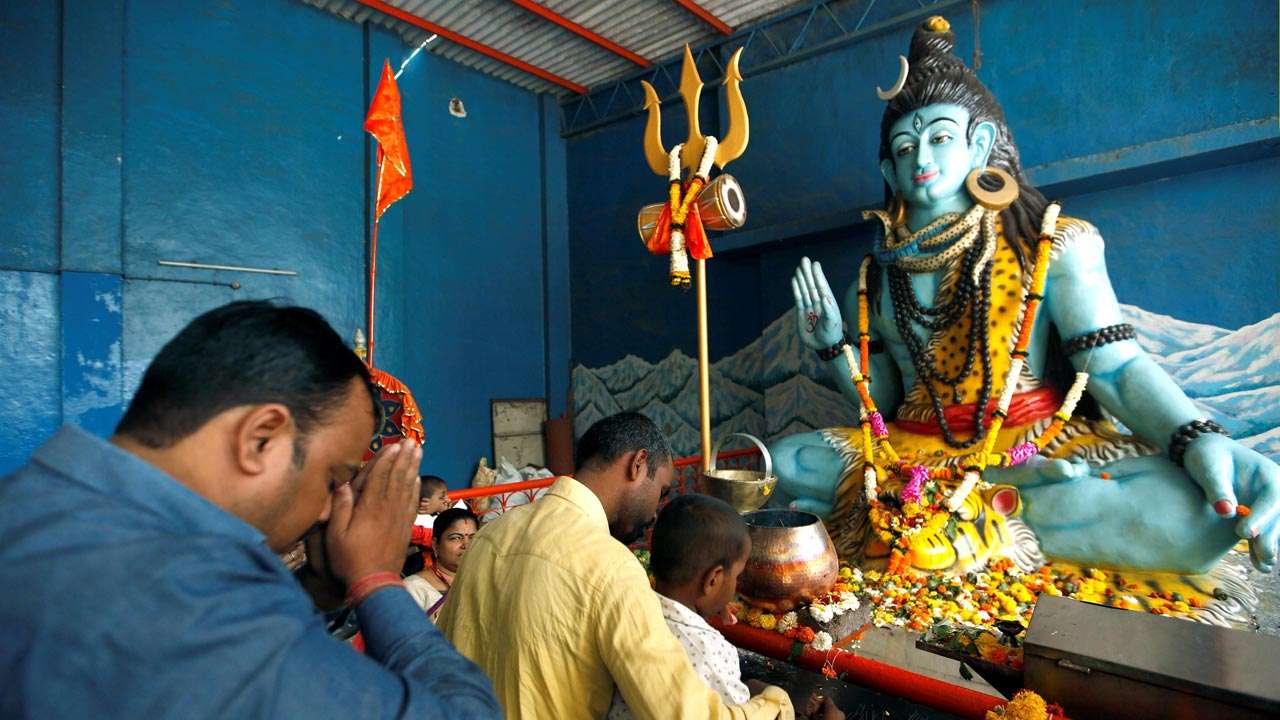Maha Shiva Ratri, one of the most popular religious celebrations, is observed with great zeal. Thousands of devotees gather to worship at the nation's Shiva temples on this particular day. On this day, Pashupatinath Temple has the most visitors. It's estimated that one million individuals travel the world each year from the Indian subcontinent.
One of the greatest seasons to visit Nepal is in the spring, and Indian tourists especially love coming during Maha Shiva Ratri, one of the most auspicious Hindu holidays.

The colourful crowd, which includes Sadhu Babas from various places, is another attraction for visitors. These visitors go to the area around the temple on this day to perform Puja (worship) and Darshan (meet). All night long, devotees chant "Om Namah Shivay" and “Mahamritunjaya," pleading for the light to triumph over darkness. As colourful and nude sadhus are seen meditating, posing for photos, and engaging with disciples, tourists are seen taking in the atmosphere with fascination.
In the courtyards of the temples, special attendance camps have been established. On this day, children can be seen collecting alms from onlookers in order to prepare for holy dinners and bonfires to commemorate the auspicious night. Some people visit Pashupatinath to observe and witness many Sadhu Babas in action. Some of these eccentric Sadhus prefer to be naked and completely covered in ashes, while others prefer to be clothed. Here are some fascinating facts about Shiva Ratri:
1. Celebration by the Newars
By the Newa people of the Kathmandu Valley, Maha Shivaratri is frequently referred to as Sila Charhe. In this context, Si denotes Lord Shiva, La denotes the month, and Charhe denotes Chaturdashi Day (the 14th day of the waxing phase or waning phase of the moon).

2. Staying Awake the Entire Night
At the end of the day, they all gather and light a bonfire with the intention of staying up all night. Staying awake that night is thought to bring good fortune in life.
3. Drinking Poison to Save the World
Shivratri is commemorated on this day when Lord Shiva saved the world by drinking poison that surfaced from the ocean during Samudra Manthan according to folklore. Because of the blue color of his throat caused by the poison, Lord Shiva is also known as Neelkanth (blue throat).
4. Married Goddess Parvati
There are many accounts of how the festival came to be. It is also said to have started on the day Lord Shiva wed Goddess Parvati. Some people also think that this is the night when Shiva and Shakti come together. It stands for the importance of both masculine and feminine forces in maintaining planetary balance.

5. Saved the World from Deluge
According to different mythology, Lord Shiva ensnared Goddess Ganga in his matted hair when she descended from heaven in full force and then released her as a number of streams on Earth. This prevented a catastrophe on Earth. The Shivalinga is bathed on this lucky night in adoration of him.
6. Tandava Nritya
Hindu mythology holds that, on this night, Lord Shiva performed Tandava, a cosmic dance of "creation, preservation, and destruction."

7. Fasting
Devotees should only eat once the day before Shiva Ratri Vratam, which is most likely on Trayodashi. After completing the morning rites for Shiva Ratri, devotees should make a Sankalp (pledge) promising to fast for the entire day and eat only on the following day. During the pledge, followers promise to exercise self-determination throughout the fasting period and ask for Lord Shiva's permission to complete the fast without interruption. Hindus commit to self-determination and seek God's favour before beginning a fast in order to complete it effectively.
Photo Credit: www.britannica.com, www.nepaliblogger.com, www.discoveryworldtrekking.com, www.dattapeetham.org, globalpress.hinduismnow.org, www.dnaindia.
Also Read: